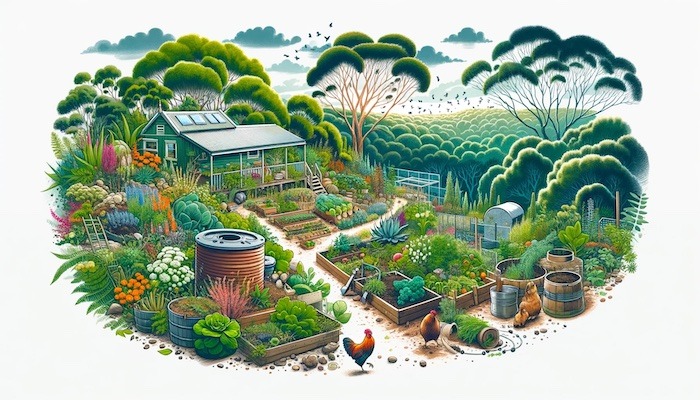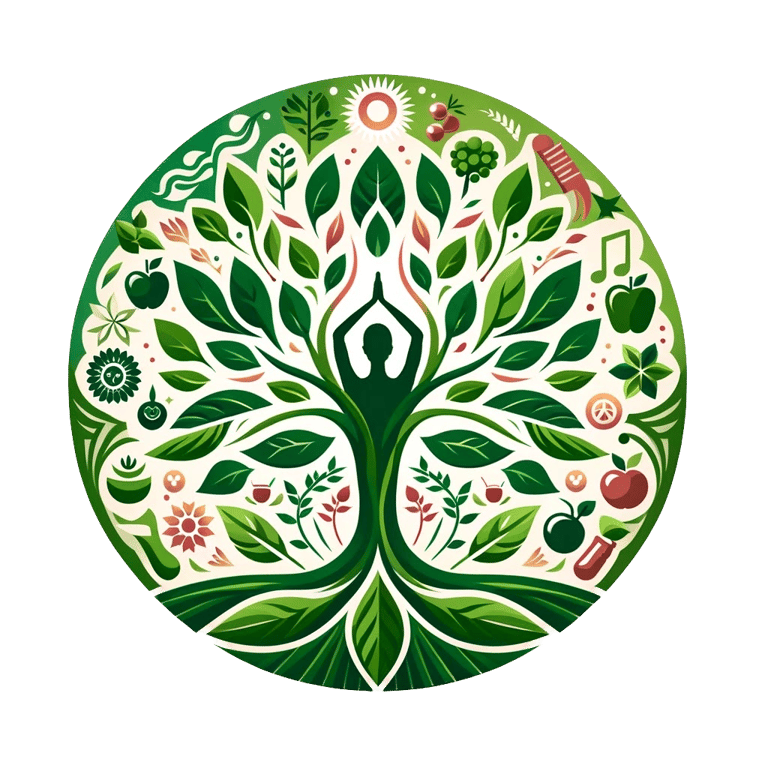
Embracing Sustainable Healthy Living in Australia: A Guide
Bruce Gibson ND
6 min read


Embracing Sustainable Healthy Living in Australia: A Guide
Introduction
In the contemporary world, the concept of sustainable healthy living has gained significant traction. This lifestyle approach intertwines personal health and wellbeing with the health of our planet. It encourages us to make choices that are beneficial for both ourselves and the environment. In Australia, a country known for its diverse ecosystems and unique wildlife, sustainable healthy living is particularly relevant. With its rich agricultural sector and growing awareness of environmental issues, Australians are well-positioned to embrace this holistic lifestyle (1).
The Importance of Diet in Sustainable Healthy Living
A crucial aspect of sustainable healthy living is our diet. The food we consume not only affects our health but also has a significant impact on the environment. A sustainable diet often involves eating more plant-based foods and less meat. The production of meat and dairy products tends to have a larger environmental impact due to factors such as deforestation, water pollution, and greenhouse gas emissions (2).
In Australia, the meat industry is a significant part of the economy, but it also contributes to environmental issues. Australians are among the highest consumers of meat per capita globally, but a shift towards more plant-based diets is noticeable (3). This shift not only benefits individual health, reducing risks of heart disease and certain cancers, but also contributes to a more sustainable food system.
Furthermore, choosing organic and locally-sourced foods when possible can reduce the carbon footprint associated with food transportation and harmful farming practices. Australia boasts a rich agricultural sector, providing ample opportunities to source locally grown produce. Farmers' markets are increasingly popular, offering fresh, locally sourced produce while supporting local farmers and contributing to the local economy (4).
The Role of Exercise
Regular physical activity is a key part of maintaining personal health. Exercise can be done in an environmentally-friendly way, such as biking or walking instead of driving, or doing outdoor activities that don't require electricity or equipment. These activities not only contribute to our physical health but also help reduce carbon emissions (5).
Australia's climate and landscape make it an ideal place for outdoor activities. From surfing on the Gold Coast to hiking in the Blue Mountains, there are countless opportunities to stay active while enjoying the country's natural beauty. Furthermore, many Australian cities are investing in cycling infrastructure and public transportation, making it easier for residents to reduce their reliance on cars (6).
Mental Health and Sustainability
Sustainable healthy living also involves taking care of your mental health. Practices like mindfulness and meditation, spending time in nature, and maintaining a healthy work-life balance can contribute to mental well-being. Studies have shown that spending time in nature can reduce stress, improve mood, and enhance cognitive function (7).
In Australia, where access to green spaces and nature is often just a short drive away, this aspect of sustainable living is particularly accessible. Whether it's a walk in the bush, a day at the beach, or simply spending time in a local park, Australians have ample opportunities to connect with nature and reap the mental health benefits it provides.
Waste Reduction and Sustainability
Reducing waste is a key part of sustainability. This can involve reducing consumption, reusing items, recycling, and composting. It also means avoiding single-use items, especially plastics, and choosing products with minimal packaging. According to the Australian Department of Agriculture, Water and the Environment, Australians generate approximately 67 million tonnes of waste per year, much of which ends up in landfills (8). By reducing, reusing, and recycling, we can significantly decrease the amount of waste we produce.
Australia has made strides in waste management, with initiatives such as the National Waste Policy Action Plan aiming to reduce waste and increase recycling rates. However, there is still much work to be done, and individual actions can make a significant difference. From choosing products with less packaging to composting organic waste at home, there are many ways Australians can contribute to waste reduction.
Water and Energy Conservation
Using water and energy efficiently can help to reduce your environmental impact. This can involve practices like taking shorter showers, turning off lights and electronics when not in use, and using energy-efficient appliances. According to the Australian Government, households can save up to $600 per year on utility bills by using energy-efficient appliances (9).
In Australia, water conservation is particularly important due to the country's dry climate and frequent droughts. Many Australians are already accustomed to water-saving practices, such as using water-efficient appliances and collecting rainwater for use in the garden. These practices not only save water but also reduce the energy used to treat and transport water.
Community Engagement
Sustainable healthy living also involves being an active and engaged member of your community. This can involve supporting local businesses, participating in community clean-up efforts, and advocating for environmental policies. Community engagement not only contributes to a more sustainable society but also fosters a sense of belonging and purpose (10).
In Australia, there are numerous opportunities for community engagement in sustainability. From local farmers' markets to community gardens and beach clean-up events, Australians can get involved in their communities and contribute to a more sustainable future.
Sustainable Transportation
Using public transportation, biking, walking, or carpooling can significantly reduce carbon emissions. According to the Australian Government, transport is the third-largest source of greenhouse gas emissions in the country, accounting for about 18% of total emissions in 2020 (11). By choosing more sustainable modes of transportation, we can help to reduce these emissions.
Many Australian cities are investing in public transportation and cycling infrastructure, making it easier for residents to choose sustainable transportation options. Additionally, the popularity of electric vehicles is on the rise in Australia, offering a more sustainable alternative for those who need to drive.
The Benefits of Green Spaces
Having access to green spaces and spending time in nature has been shown to have numerous health benefits, from reducing stress to improving physical health. Green spaces also provide habitats for wildlife and help to reduce air pollution (12).
Australia, with its diverse ecosystems and national parks, offers ample opportunities for residents to connect with nature. Whether it's a walk in the bush, a picnic in a local park, or a weekend camping trip, spending time in green spaces can contribute to physical and mental health while fostering a deeper appreciation for the environment.
Conclusion
Sustainable healthy living is not about being perfect, but about making more conscious choices that benefit both personal health and the environment. It's a journey that involves small, incremental changes over time. By embracing this lifestyle, Australians can contribute to a healthier planet while also improving their own well-being. As we face the challenges of climate change and environmental degradation, sustainable healthy living offers a path towards a more resilient and sustainable future.
Please take some time to explore our other Articles here.
References:
1. Australian Bureau of Statistics. (2020). Environmental Issues: Waste Management and Transport Use. Retrieved from https://www.abs.gov.au/statistics/environment/environmental-issues-waste-management-and-transport-use/latest-release
2. Poore, J., & Nemecek, T. (2018). Reducing food’s environmental impacts through producers and consumers. Science, 360(6392), 987-992.
3. Australian Bureau of Agricultural and Resource Economics and Sciences. (2019). Australian food statistics. Retrieved from https://www.agriculture.gov.au/abares/research-topics/agricultural-commodities/australian-food-statistics
4. Edwards-Jones, G., Milà i Canals, L., Hounsome, N., Truninger, M., Koerber, G., Hounsome, B., ... & Jones, D. L. (2008). Testing the assertion that ‘local food is best’: the challenges of an evidence-based approach. Trends in Food Science & Technology, 19(5), 265-274.
5. Warburton, D. E., Nicol, C. W., & Bredin, S. S. (2006). Health benefits of physical activity: the evidence. Canadian medical association journal, 174(6), 801-809.
6. Australian Government Department of Infrastructure, Transport, Regional Development and Communications. (2020). Walking, Riding and Access to Public Transport. Retrieved from https://www.infrastructure.gov.au/transport/active/
7. Bratman, G. N., Anderson, C. B., Berman, M. G., Cochran, B., De Vries, S., Flanders, J., ... & Kahn Jr, P. H. (2019). Nature and mental health: An ecosystem service perspective. Science Advances, 5(7), eaax0903.
8. Australian Department of Agriculture, Water and the Environment. (2020). National Waste Report 2020. Retrieved from https://www.environment.gov.au/protection/waste-resource-recovery/national-waste-reports/national-waste-report-2020
9. Australian Government Department of Industry, Science, Energy and Resources. (2020). Energy Rating. Retrieved from https://www.energyrating.gov.au/
10. Ohmer, M. L., & Beck, E. (2006). Citizen participation in neighborhood organizations and its relationship to volunteers' self- and collective efficacy and sense of community. Social Work Research, 30(4), 243-253.
11. Australian Government Department of Industry, Science, Energy and Resources. (2021). Australia's emissions projections 2020. Retrieved from https://www.industry.gov.au/data-and-publications/australias-emissions-projections-2020
12. Kuo, M. (2015). How might contact with nature promote human health? Promising mechanisms and a possible central pathway. Frontiers in Psychology, 6, 1093.
Let's talk about it...

